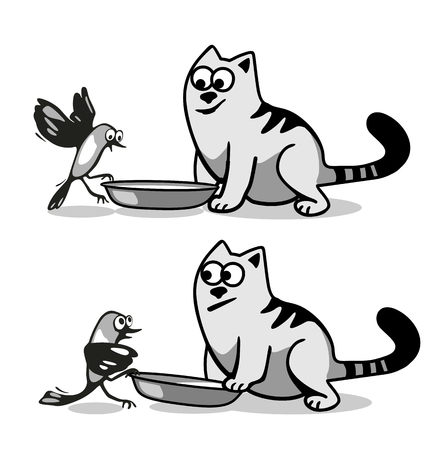1. Understanding the Lifespan of Cat Toys
When it comes to your cat’s favorite toys, understanding how long they typically last is key to keeping your furry friend happy and safe. Not all cat toys are created equal—some can withstand months of pouncing and clawing, while others show signs of wear after just a few play sessions. Generally, toys made from durable materials like thick rubber or tightly woven rope tend to outlast plush or feathered options, which can easily tear or lose their appeal as soon as they start fraying. Balls with bells inside, interactive wand toys, and silicone chew toys usually hold up better under regular use. On the other hand, felt mice, paper balls, and stuffed animals often break down quickly, especially if your cat is an enthusiastic player. By knowing what materials stand up to your cat’s energy level, you’ll get a better idea of when it might be time to swap out old favorites for something new.
2. Why Replacing Cat Toys Matters
Keeping your cat’s toys fresh and in good condition isn’t just about having fun—it’s a key part of responsible pet care. Regularly rotating or replacing cat toys directly impacts your feline friend’s safety, mental stimulation, and physical health. Here’s why it matters:
Safety First: Avoiding Hazards
Worn-out toys can become dangerous for cats. Frayed strings, loose parts, or broken plastic pieces are choking hazards or could cause internal injuries if swallowed. Inspecting and swapping out damaged toys helps prevent accidents at home.
Mental Stimulation: Beating Boredom
Cats are natural hunters and explorers. If they see the same toy day after day, they may lose interest—leading to boredom or even behavioral issues like over-grooming or scratching furniture. Introducing new toys or rotating their favorites keeps them engaged and challenged.
Physical Health: Encouraging Exercise
Active play is crucial for maintaining a healthy weight and muscle tone in cats. Toys that are in good shape encourage more jumping, pouncing, and chasing, which translates into better overall fitness.
Quick Comparison: Old vs. New Toys
| Aspect | Old/Worn-Out Toy | New/Rotated Toy |
|---|---|---|
| Safety | Risk of injury from damage | Safe, intact materials |
| Mental Engagement | Boring, easily ignored | Exciting, novel experience |
| Exercise Value | Limited activity | Promotes active play |
Bottom Line:
If you want your cat to stay happy and healthy, make checking and replacing their toys part of your regular routine. Your effort goes a long way toward keeping your kitty both safe and entertained.

3. Telltale Signs Your Cat’s Toy Needs Replacing
Even the most durable cat toys have a shelf life, and knowing when to swap them out is key to keeping your feline friend safe and engaged. When you’re not sure if it’s time for an upgrade, pay attention to some visible and behavioral clues that your cat—and the toys themselves—are giving you.
Frays, Tears, and Missing Pieces
Take a close look at your cat’s toys, especially those made of fabric or string. If you notice frayed edges, loose threads, stuffing poking out, or missing parts like bells or feathers, it’s a clear sign the toy has seen better days. Small pieces can become choking hazards, so don’t wait too long to toss damaged items.
Strange Smells
Toys that start to develop odd or musty odors are another red flag. Cat saliva and lingering moisture can harbor bacteria, making toys smell funky over time. If a good wash doesn’t fix the problem—or if the toy isn’t washable—it’s best to say goodbye for your kitty’s health.
Your Cat Just Isn’t Interested
Cats can be picky about their playthings, and sometimes they simply lose interest in old favorites. If your cat ignores a toy they used to love, despite your efforts to reintroduce it, consider rotating in something new. A lack of enthusiasm could mean the toy is worn out or no longer stimulating enough.
Safety First
Ultimately, trust your instincts and keep an eye on how your cat interacts with their toys. Regular checks ensure that playtime stays both fun and safe. Upgrading worn-out toys isn’t just about keeping things fresh—it’s about protecting your cat from avoidable risks while supporting healthy play habits.
4. How Often Should You Replace Cat Toys?
When it comes to replacing your cat’s toys, there’s no one-size-fits-all answer—but there are some helpful guidelines you can follow to keep your feline friend both safe and engaged. How often you should swap out old toys depends on several factors: how frequently your cat plays, the type of toy, and how quickly those toys show signs of wear and tear.
General Replacement Guidelines
| Type of Toy | Replacement Frequency | What to Watch For |
|---|---|---|
| Plush/Mice Toys | Every 1–2 months or sooner if damaged | Torn seams, missing stuffing, loose eyes or parts |
| Feather Wands & Teasers | Every 1–2 months, or at first sign of fraying | Bent sticks, broken string, missing feathers |
| Catnip Toys | Replace catnip every 1–3 months; replace toy if torn | Loss of scent, holes in fabric, leaking catnip |
| Rubber Balls & Plastic Toys | Every 6–12 months, or when cracked/chewed through | Bite marks, cracks, sharp edges |
| Puzzle/Interactive Toys | Check monthly; replace when worn or malfunctioning | Loose parts, stuck mechanisms, visible damage |
Your Cat’s Play Habits Matter
If your cat is an enthusiastic player—batting, chewing, and pouncing daily—you’ll need to inspect and possibly replace their favorite toys more often. More mellow cats may not wear out their toys as quickly, but regular checks are still important.
Signs It’s Time for a New Toy:
- You notice broken parts that could be swallowed or cause injury.
- The toy has lost its original appeal—no more crinkle sound or scent.
- You see excessive dirt or stains that can’t be cleaned off.
- Your cat simply isn’t interested anymore.
Pro Tip:
Rotate your cat’s toys weekly to keep things fresh and exciting. This also helps extend the life of each toy and gives you more time to spot any damage before it becomes a hazard.
5. Safe Toy Disposal and Sustainable Alternatives
When it’s time to retire your cat’s old toys, safety and sustainability should be top of mind. Many cat toys contain small parts, stuffing, or materials that can be harmful if not disposed of properly. Before tossing them in the trash, check for recyclable components—like hard plastics or fabric scraps—that can go into your local recycling bin. If a toy is still in decent shape but your cat has lost interest, consider donating it to a local animal shelter (after a thorough cleaning) to give it a second life with another feline friend.
If you want to reduce your environmental paw print, opt for eco-friendly replacements when you shop for new toys. Look for products made from natural fibers such as organic cotton, wool, or hemp; these materials break down more easily than synthetics and are gentler on the planet. Many small businesses across the U.S. craft handmade cat toys using locally sourced or recycled materials—supporting these makers not only benefits the environment but also your community. You can even try DIY options at home, like repurposing old socks into simple catnip pouches or braiding leftover fabric strips into playful knots. By choosing sustainable alternatives and disposing of old toys responsibly, you’re making playtime safer for your cat and kinder to the world around you.
6. Encouraging Your Cat with New Toys
Introducing new toys to your cat is more than just a fun shopping trip—it’s a crucial part of keeping your feline friend mentally and physically stimulated. Cats are curious creatures, but they can also be picky or hesitant when faced with something unfamiliar. Here are some practical tips to help your cat embrace new toys and keep playtime exciting.
Start Slow and Be Patient
If your cat tends to be cautious, don’t expect them to instantly pounce on a new toy. Place the new item near their favorite resting spot or in an area where they feel safe. Let them sniff, paw, and investigate at their own pace without forcing interaction. Using a little bit of catnip can also help spark initial interest.
Rotate Toys for Lasting Engagement
Cats can lose interest quickly if the same toys are always available. To keep things fresh, try a rotation strategy: only leave out a few toys at a time and store the rest out of sight. Every week or two, swap in different toys from your stash. This makes “old” toys seem new again and prevents boredom from setting in.
Mix Up Toy Types
Offer a variety of toys that cater to different instincts—think interactive wands for chasing, plush mice for pouncing, puzzle feeders for problem-solving, and balls for batting around. Switching up textures and play styles helps meet your cat’s enrichment needs and reveals which kinds they enjoy most.
Enrichment Tips Beyond Toys
Remember, enrichment isn’t limited to store-bought toys. Try hiding treats inside cardboard boxes or paper bags (with handles removed), making simple DIY puzzles, or setting up climbing shelves by windows for bird-watching entertainment. The key is to keep things interesting and encourage natural behaviors like stalking, hunting, and exploring.
By thoughtfully introducing new toys and rotating what’s available, you’ll help prevent boredom-related behavior issues while supporting your cat’s health and happiness. Watch how they react to each change—your cat will let you know what works best!


